Night photography
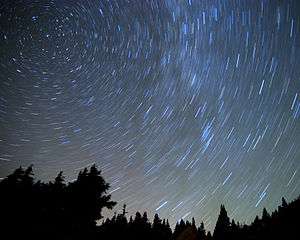
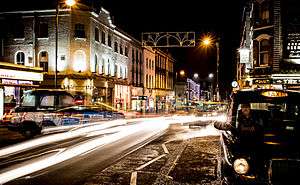
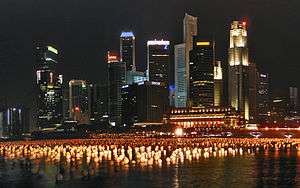
Night photography refers to photographs taken outdoors between dusk and dawn. Night photographers generally have a choice between using artificial light and using a long exposure, exposing the scene for seconds, minutes, and even hours in order to give the film or digital sensor enough time to capture a usable image. With the progress of high-speed films, higher-sensitivity digital image sensors, wide-aperture lenses, and the ever-greater power of urban lights, night photography is increasingly possible using available light.
History
In the early 1900s, a few notable photographers, Alfred Stieglitz and William Fraser, began working at night. The first known female night photographer is Jessie Tarbox Beals. The first photographers known to have produced large bodies of work at night were Brassai and Bill Brandt. In 1932, Brassai published Paris de Nuit, a book of black-and-white photographs of the streets of Paris at night. During World War II, British photographer Brandt took advantage of the black-out conditions to photograph the streets of London by moonlight.
Photography at night found several new practitioners in the 1970s, beginning with the black and white photographs that Richard Misrach made of desert flora (1975–77). Joel Meyerowitz made luminous large format color studies of Cape Cod at nightfall which were published in his influential book, Cape Light (1979). .Jan Staller’s twilight color photographs (1977–84) of abandoned and derelict parts of New York City captured uncanny visions of the urban landscape lit by the glare of sodium vapor street lights.
By the 1990s, British-born photographer Michael Kenna had established himself as the most commercially successful night photographer. His black-and-white landscapes were most often set between dusk and dawn in locations that included San Francisco, Japan, France, and England. Some of his most memorable projects depict the Ford Motor Company's Rouge River plant, the Ratcliffe-on-Soar Power Station in the East Midlands in England, and many of the Nazi concentration camps scattered across Germany, France, Belgium, Poland and Austria.
During the beginning of the 21st century, the popularity of digital cameras made it much easier for beginning photographers to understand the complexities of photographing at night. Today, there are hundreds of websites dedicated to night photography.
Subjects
- Celestial bodies (See astrophotography.)
- City skylines
- Factories and industrial areas, particularly those that are brightly lit and are emitting smoke or vapour
- Fireworks
- Nightlife or rock concerts
- Caves (See cave photography)
- Streets with or without cars
- Abandoned buildings and artificial structures that are lit only by moonlight
- Bodies of water that are reflecting moonlight or city lights
- Thunderstorms
- Aurora (northern or southern lights)
- Lava
- Amusement rides
- Airplanes (Planespotting)
Technique and equipment
The following techniques and equipment are generally used in night photography.
- A tripod is usually necessary due to the long exposure times. Alternatively, the camera may be placed on a steady, flat object e.g. a table or chair, low wall, window sill, etc.
- A shutter release cable or self timer is almost always used to prevent camera shake when the shutter is released.
- Manual focus, since autofocus systems usually operate poorly in low light conditions. Newer digital cameras incorporate a Live View mode which often allows very accurate manual focusing.
- A stopwatch or remote timer, to time very long exposures where the camera's bulb setting is used.
- A camera lens with a wide aperture, preferably one with aspherical elements that can minimize coma
Long exposures and multiple flashes
The long exposure multiple flash technique is a method of night or low light photography which use a mobile flash unit to expose various parts of a building or interior using a long exposure.
This technique is often combined with using coloured gels in front of the flash unit to provide different colours in order to illuminate the subject in different ways. It is also common to flash the unit several times during the exposure while swapping the colours of the gels around to mix colours on the final photo. This requires some skill and a lot of imagination since it is not possible to see how the effects will turn out until the exposure is complete. By using this technique, the photographer can illuminate specific parts of the subject in different colours creating shadows in ways which would not normally be possible.
Painting with light
When the correct equipment is used such as a tripod and shutter release cable, the photographer can use long exposures to photograph images of light. For example, when photographing a subject try switching the exposure to manual and selecting the bulb setting on the camera. Once this is achieved trip the shutter and photograph your subject moving a flashlight or any small light in various patterns. Experiment with this outcome to produce artistic results. Multiple attempts are usually needed to produce a desired result.
High ISO
Advanced imaging sensors along with sophisticated software processing makes low-light photography with High ISO possible without tripod or long exposure. Digital SLRs have high end APS-C and full-frame digital SLR sensors which have a very large dynamic range and high sensitivity, making them capable of night photography. These large sensor cameras are able to collect more light than smaller sensors due to the size of the imaging area. Combined with large aperture lenses and other equipment and techniques, this allows for photography with high quality in very dark locations.
BSI-CMOS is another type of CMOS sensor that is gradually entering the compact camera segment which is superior to the traditional CCD sensors. Cameras with small sensors such as: Sony Cyber-shot DSC-RX100, Nikon 1 J2 and Canon PowerShot G1X give good images up to ISO 400.[1]
Moonlight photography
Moonlight photography (taking pictures of the surface of the Earth as illuminated by moonlight) is very different from lunar photography (taking pictures of the surface of the Moon as illuminated by sunlight). The Moon has an effective albedo of approximately 0.12, comparable to fresh asphalt. Since it is essentially a dark rock in full sunlight, photographing its surface needs an exposure comparable to what a photographer would use for ordinary mid-brightness surfaces (buildings, trees, faces, etc.) with an overcast sky.
The sunlight reflected by the full moon onto the Earth is about 250,000 times dimmer than the light we get directly from the Sun in the daytime. Since log2(250,000) = 17.93..., full-moon photography requires 18 stops more exposure than sunlight photography, for which the sunny 16 rule is a commonly used guideline.[2]
Reciprocity failure
Imagine a full daylight exposure of 1/100 second at ISO 100 and f/16 (the baseline of sunny 16). Adding 18 stops to convert from the Sun to the Moon could result in a shutter speed of 8 seconds at ISO 400 and f/2 (+10 stops of time, +2 stops of ISO, +6 stops of aperture). However, on most chemical film, such an exposure would turn out too dark. This is because film does not expose in linear proportion to the light it absorbs, an effect called reciprocity failure. At light levels as dim as moonlight, it needs more light than a linear extrapolation of daylight values would suggest.
For example, testing shows that Kodak Portra needs 1 extra stop for a nominal 8 second exposure, so in this case it would need 16 seconds.[3]
In practice, moonlight photography often uses exposures of several minutes. Digital cameras generally have less reciprocity failure, but do show image noise in low light.
Examples
.jpg) Clun lake and castle by moonlight, 1920's
Clun lake and castle by moonlight, 1920's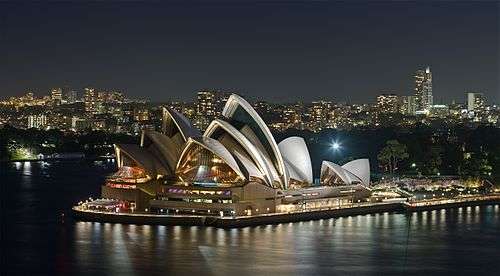 An exposure blended night image of the Sydney Opera House
An exposure blended night image of the Sydney Opera House
 Rainbow Bridge viewed from Odaiba
Rainbow Bridge viewed from Odaiba Hong Kong, view from Peak; 2 second exposure time
Hong Kong, view from Peak; 2 second exposure time Four image panorama of Washington Park, 30 second exposures each.
Four image panorama of Washington Park, 30 second exposures each. The original World Trade Center in New York City.
The original World Trade Center in New York City. The Golden Gate Bridge at night.
The Golden Gate Bridge at night. Taipei 101 at night, fully lit.
Taipei 101 at night, fully lit. The Space Shuttle Columbia launches for its mission to the Hubble Space Telescope.
The Space Shuttle Columbia launches for its mission to the Hubble Space Telescope. Toronto (30-second exposure).
Toronto (30-second exposure). An exposure blended image consisting of 30, 2.5 and 10 second exposures
An exposure blended image consisting of 30, 2.5 and 10 second exposures- University of New South Wales, Sydney (digital, night mode)
 Copenhagen at night
Copenhagen at night
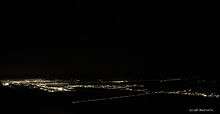 View of Al Ain from top of Jebel Hafeet, UAE
View of Al Ain from top of Jebel Hafeet, UAE.jpg) Early night photograph of the Luna Park, Coney Island, from the Detroit Publishing Co. collection, 1905.
Early night photograph of the Luna Park, Coney Island, from the Detroit Publishing Co. collection, 1905. Chay kenar Boulevard in Tabriz, Iran
Chay kenar Boulevard in Tabriz, Iran.jpg) São Paulo, Brazil
São Paulo, Brazil
Published night photographers
This section includes significant night photographers who have published books dedicated to night photography, and some of their selected works.
- Brassai
- Paris de Nuit, Arts et metiers graphiques, 1932.
- Harold Burdekin and John Morrison
- London Night, Collins, 1934.
- Jeff Brouws
- Inside the Live Reptile Tent, Chronicle Books, 2001. ISBN 0-8118-2824-7
- Alan Delaney
- London After Dark, Phaidon Press, 1993. ISBN 0-7148-2870-X
- Neil Folberg
- Celestial Nights, Aperture Foundation, 2001. ISBN 0-89381-945-X
- Karekin Goekjian
- Light After Dark, Lucinne, Inc. ASIN B0006QOVCG
- Todd Hido
- Outskirts, Nazraeli Press, 2002. ISBN 1-59005-028-2
- Peter Hujar
- Night, Matthew Marks Gallery/Fraenkel Gallery, 2005. ISBN 1-880146-45-2
- Rolfe Horn
- 28 Photographs, Nazraeli Press. ISBN 1-59005-122-X
- Lance Keimig
- Night Photography, Finding Your Way In The Dark, Focal Press, 2010. ISBN 978-0-240-81258-8
- Brian Kelly
- Grand Rapids: Night After Night, Glass Eye, 2001. ISBN 0-9701293-0-0
- Michael Kenna
- The Rouge, RAM Publications, 1995. ISBN 0-9630785-1-8
- Night Work, Nazraeli Press, 2000. ISBN 3-923922-83-3
- William Lesch
- Expansions, RAM Publications, 1992. ISBN 4-8457-0667-9
- O. Winston Link
- The Last Steam Railroad in America, Harry Abrams, 1995. ISBN 0-8109-3575-9
- Tom Paiva
- Industrial Night, The Image Room, 2002. ISBN 0-9716928-0-7
- Troy Paiva
- Night Vision: The Art of Urban Exploration, Chronicle Books, 2008. ISBN 0-8118-6338-7
- Lost America: The Abandoned Roadside West, MBI Publishing, 2003. ISBN 0-7603-1490-X
- Andrew Sanderson
- Night Photography, Amphoto Books. ISBN 0-8174-5007-6
- Bill Schwab
- Bill Schwab: Photographs, North Light Press, 1999. ISBN 0-9765193-0-5
- Gathering Calm, North Light Press, 2005. ISBN 0-9765193-2-1
- Jan Staller
- Frontier New York, Hudson Hills Press, 1988. ISBN 1-55595-009-4[4]
- Zabrina Tipton
- At Night in San Francisco, San Francisco Guild of the Arts Press, 2006. ISBN 1-4243-1882-3
- Giovanna Tucker
- "How to Night Photography", 2011. ISBN 978-1-4657-4423-4
- Nora Vrublevska and Dan Squires
- "Cambridge at Night", 2013. ISBN 978-1-935489-27-6
- Volkmar Wentzel
- Washington by Night, Fulcrum Publishing, 1998. ISBN 978-1-55591-410-3
See also
-
 Media related to Buildings and structures at night at Wikimedia Commons
Media related to Buildings and structures at night at Wikimedia Commons - Available light
- Light painting
References
- ↑ "Tested and Compared: 21 Top Cameras For Digital Low-Light Photography". November 8, 2012.
- ↑ Lance Keimig. Night Photography: Finding your way in the dark.
- ↑ http://www.largeformatphotography.info/forum/showthread.php?106441-Portra-160-and-400-Reciprocity-Failure
- ↑ http://www.janstaller.net/books/frontier-new-york/
External links
- Comprehensive tutorials and articles about how to do night photography by The Nocturnes
- Exposures for Moonlight Photography.
- Calculating Exposures for Moonlight Photography.
- Lunar Photography Exposure Guide.